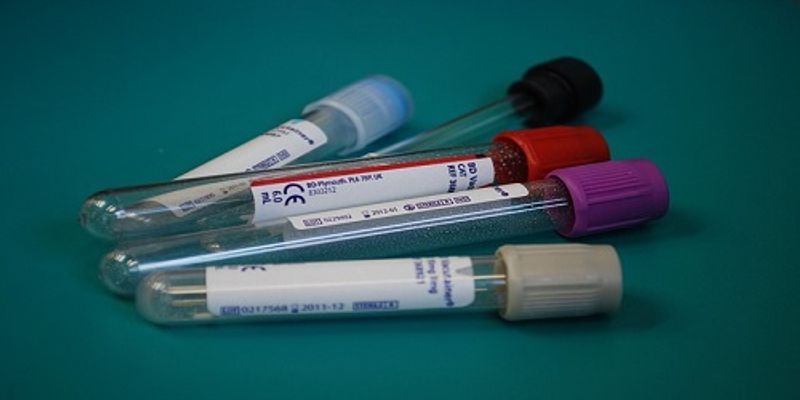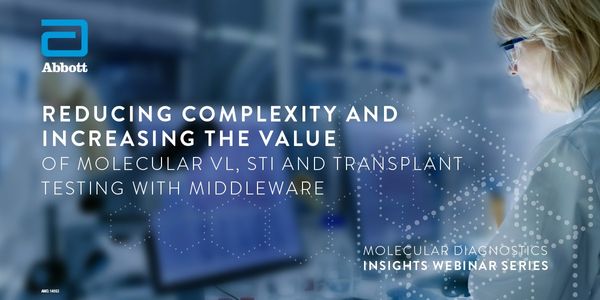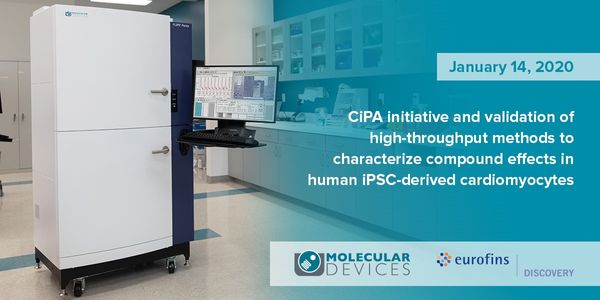Laboratory Testing
Laboratory Testing: Laboratory tests check a sample of your blood, urine, or body tissues. A technician or your doctor analyzes the test samples to see if your results fall within the normal range. The tests use a range because what is normal differs from person to person. Depending on the test, the presence, absence, or amount of an analyte may mean you do have a particular condition or it may mean that you do not have the particular condition.
-
FEB 26, 2020 | 9:00 AMDATE: February 26, 2020 TIME: 9:00am PST 3D cell culture and analysis and the study of organoids and spheroids are becoming more prevalent as a research method in publications as traditional...CRISPR revolutionized gene editing, but multi-target screening remains a complex goal. In addition, the fast pace of CRISPR technology development has brought sophisticated options for libra...Speaker: Andrew Ravanelli, PhD
Recent advances in DNA sequencing and omics-based capabilities are revealing incredible therapeutic opportunities and quickly transforming drug discovery. Molecularly targeted drugs aim to e...
FEB 25, 2020 | 10:00 AM
DATE: 25 Febrero 2020 TIME: 13:00 COT, 10:00 PST Los desarrollos tecnológicos en analizadores automatizados de Hematología continúan transformando el laboratorio de Hema...
FEB 19, 2020 | 11:00 AM
DATE: February 19, 2020TIME: 11:00am PST, 2:00pm EST...
FEB 18, 2020 | 8:00 AM
DATE: February 18, 2020 TIME: 8:00am PST...
FEB 13, 2020 | 7:30 PM
DATE: February 14, 2020 TIME: 11:30am SGT, 2:30pm AET Antimicrobial resistance is a growing threat to the health and safety of the world’s population. The World Health Organisation rec...
FEB 13, 2020 | 10:00 AM
DATE: February 13, 2020 TIME: 10:00am PST Antimicrobial resistance is a growing threat to the health and safety of the world’s population. The World Health Organisation recognizes fast...
FEB 13, 2020 | 1:00 AM
DATE: February 13, 2020 TIME: 10:00am CET...
The compendium of newly emerging and currently available hemophilia and anticoagulant treatments, while offering new choices for improved patient care, can create significant levels of inter...
Speaker:
Donna Castellone, MS, MASCP, MT(ASCP) SH
JAN 15, 2020 | 10:00 AM
DATE: January 15, 2020 TIME: 10:00am PST Genomics, personalized medicine and cost stewardship are just a few of the forces behind the need for better management of discrete testing informati...
Speaker:
Michael D. Sutch, CPHQ (NAHQ), PMP (PMI) and MT(ASCP)
Sponsored By: Abbott Molecular Diagnostic
JAN 14, 2020 | 9:00 AM
Fecal elastase-1 – a biomarker for pancreatic exocrine insufficiency(EPI) continues to gain traction as an ideal biomarker for assessing EPI. This presentation will include a review of...
JAN 14, 2020 | 8:00 AM
DATE: January 14, 2019 TIME: 8:00am PST Drug-induced QT interval prolongation and Torsades de Pointes (TdP) arrhythmias are the leading causes for drug withdrawals from market and compound a...
Speaker:
Muthukrishnan Renganathan, PhD
, Panida Lertkiatmongkol, PhD
, Oksana Sirenko, PhD
, Carole Crittenden
Sponsored By: Molecular Devices,
Eurofins Discovery
With an increasing push to improve safety, efficacy, and efficiency throughout the drug development pipeline, researchers are evermore looking to improve the predictive capacity of their in...
The liver plays a critical role in the metabolism and clearance of more than 70% of marketed drugs. Furthermore, toxicity to the liver is a major reason for preclinical and clinical drug fai...
“The poor translatability of early-stage preclinical models is a major setback in oncology drug development. Immortalized cell lines, that are extensively used in drug screens, undergo...
Open Science has changed research by making data accessible and shareable, contributing to replicability to accelerate and disseminate knowledge. However, for rodent cognitive studies the av...
Biomarkers are critical tools for all stages of cancer research, from drug development through clinical applications. Cancer is fundamentally a disease of unregulated cell growth and circumv...
Speaker:
Olivia Stricker, PhD
Presented at: Drug Discovery & Development Virtual Event Series 2020























